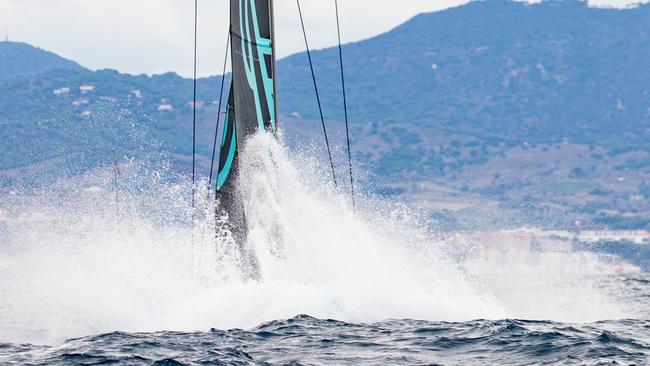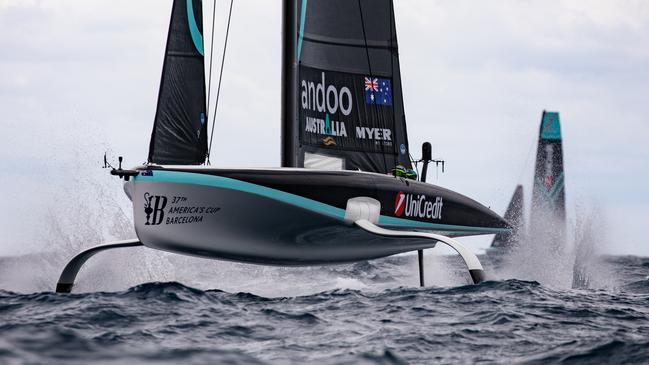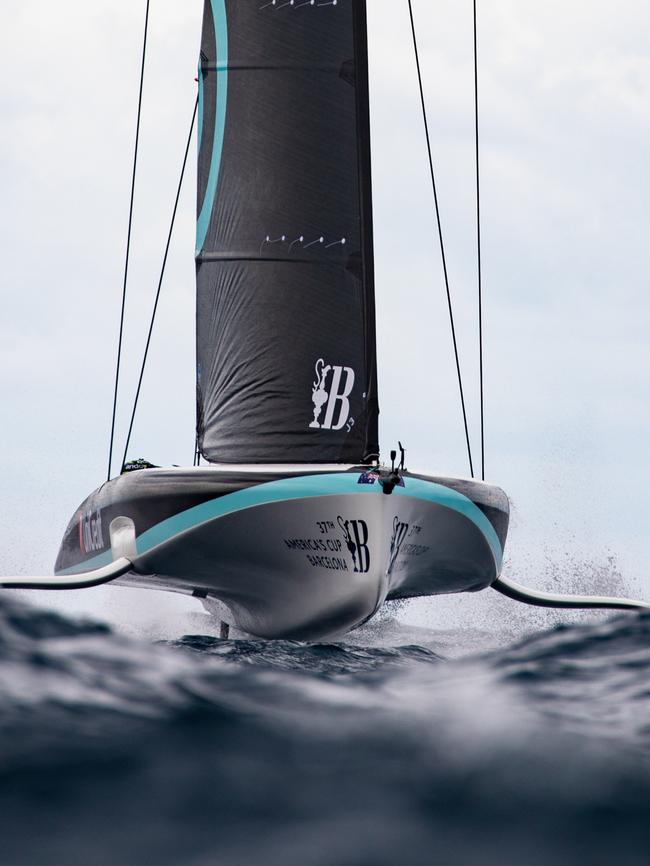Andoo Australia’s high speed nosedive, swamping at America’s Cup youth regatta
Australia’s foiling AC40 was swamped, sailors slammed by a ‘tsunami’ of water and wind equipment wiped out in a high speed nosedive at the America’s Cup youth regatta.

Local Sport
Don't miss out on the headlines from Local Sport. Followed categories will be added to My News.
Sailor Jack Ferguson’s googles were blown off his face as a “tsunami of water’’ slammed him, flooding Australia’s foiling AC40 and wiping out wind equipment in a high speed and potentially treacherous nose dive in rough water at the youth America’s Cup.
Incredibly helmsman Ferguson, who bore the brunt of the pitch-pole, was left only with red and sore eyes from then having to race on without face protection and the 40-footer largely undamaged despite being swamped by tons of water the crew had to drain in a hurry to be allowed to race on.
The dramatic pitch pole, which saw the speed of the foiling boat go from 38 knots (70km/h) to zero in seconds, could well have ended Andoo Australia’s bid to make the semi-finals of the Youth America’s Cup.
Instead it has given rivals a glimpse into the toughness and grit of Ferguson and his crewmates, fellow helmsman and skipper Cole Tapper, and trimmers Max Paul and Tim Needham.
Rather than panicking, the collected Aussies rushed to drain the water from their boat in record time and miraculous made it to the start within the designated time.

Incredibly, without wind or associated technical data to aid them, they raced from the back of the fleet into third place to consolidate second position in the fleet of invited teams racing the UniCredit Youth America’s Cup
“It was basically a tsunami of waters in the face and as you saw my goggles got blown clean off,” Ferguson told News Corp.
“The worst part about that was for the rest of the race, every time we had a bit of spray or some water coming off the jib it basically just went straight in the eyes and straight in the face which made it quite hard to see.


“The by-product of the pitch pole as well was the wind gear snapped off which meant we had no data on like our headings and target speeds and that kind of thing, which made it quite challenging.
“I think we did well together to get it around the track.’’
With two races to sail, Australia must finish top three to advance to the semi-finals of the Youth Challenge where they will meet up with the top boats from the Challenger side of the draw being contested by the inform Italian team and crews from the US, Great Britain, France, Switzerland and AC defender New Zealand.
The Australians, who left the water early Sunday with a 1-4-3-2-3 scorecard – paid the price for boat handling issues and could have potentially placed higher in all of their races given their excellent straight line speed.
“The gybing is an issue. It happened a number of times today,” Ferguson said.
The Australians have not raced in rough water conditions previously in the AC40s and did most of their preparation for the regatta on a computer simulator in Sydney.
“It’s nothing like the simulator, that sort of swell and wave angle,” Ferguson said.
“I think we got better, a bit more accurate with how we were doing the manoeuvres.”
In a confidence boost the Australian crew also racked up their first win of the regatta despite losing valuable time – and positions – when they fell off their foils in a nasty and costly stall.
More from AMANDA LULHAM HERE





